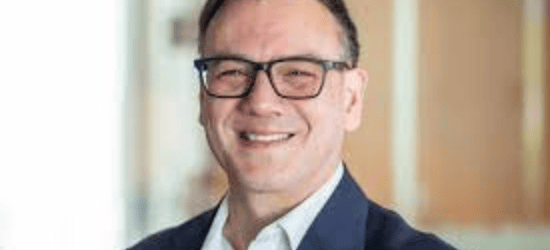The past year has seen Cbus Super bolster its team and systems, adding to its internalisation of investments and continuing down the journey of fee reduction to deliver the best return of the fund’s 37-year history. Amanda White spoke to CIO Kristian Fok.
Cbus Super, the A$59 billion Australian industry fund delivered an annual return of 19.34 per cent for its growth option, the largest return in the fund’s 37-year history.
A willingness to be exposed to equities and a slight overweight position was the main contributor to the return with an additional alpha of 1 per cent added to the total portfolio from the equities’ allocation.
Equities make up about 50 per cent of the portfolio with the inhouse team managing about a third of that. The 4 per cent overweight allocation was in part deliberate but also a result of unfulfilled unlisted allocations being parked in equities.
“Last year we had strong alpha on global equities and Australian equities was flat, this year it was reversed and the Australian allocation was a really strong performer,” says Kristian Fok, the fund’s chief investment officer. “It’s about building robust portfolios that can make contributions at different times. The key thing is when things rotated we didn’t shift allocations we remained balanced and maintained our allocations so we didn’t lose performance.”
The Australian equities allocation is biased towards stockpicking with small and mid-cap allocations managed by a combination of the inhouse team and external managers.
In addition Fok says the fund’s unique position in unlisted property was a great contributor to its return. The fund’s property allocation returned 11.3 per cent compared with low to mid-single digits of the general property manager cohort.
“A big chunk was in Cbus Property and developments that were completed during that period, so the development profit was realised,” he says. “Leveraging off the insights from being closer to the sector helped.”
Cbus is underweight fixed income but has a significant overweight in cash, with about $5 billion waiting to be deployed. Fok says the fund is looking at boosting allocations to property and infrastructure, where it is already quite active, but also in credit.
“We are still quite active in the unlisted space, we’d like to do more there but it is probably going to be harder to put that money away and is becoming more challenging from a pricing point of view. We have the advantage of being able to develop property,” he says. “To be honest it is a once in a decade opportunity when markets correct like they did. The hardest thing is managing the liquidity aspect of it rather than the opportunity.”
Internalisation
Cbus currently manages 36 per cent of its assets internally, with the expectation that will rise to about 40 per cent. All the strategies are benchmarked against external equivalents.
Some of the strategies measured as ‘internal’ use the internal team for idea generation and external managers for execution, and Fok is open to new strategies and ideas.
“Within the 36 per cent internal there are some strategies where we partner with managers, particularly on the quant side. We design the strategy and they implement. It is very economical and allows us to think about ideas and opportunities and express them through our own IP and research.”
During Fok’s almost nine-year tenure as CIO, the investment team has grown from around 10 to now 115 with a further 20 positions to be filled across equities, responsible investment and operations.
Despite the internalisation Fok says the allocation to managers has actually increased. “65 per cent of the assets are still external and the assets have doubled.”
And like other asset owners Cbus has reduced the number of relationships, looking to managers to get insights that can benefit their decision making. An example is the insights on the built environment from the private equity investment with Brookfield Technology Partners.
“As an investor in that fund and co-investor in some of the companies we have the benefit of being an investor but also how that technology might be incorporated in the assets we own and we can introduce those insights to our managers so they can benefit,” he says.
“When we are adding sophistication and complexity we need the right data to understand the risks we are taking”
Fee reductions
In the past five years Cbus has reduced its asset management fees per dollar invested by 40 per cent.
In the past year alone investment costs, including transaction costs, have reduced by five basis points to 51 basis points.
“Internalisation has been a big contributor but also we look at fees with a holistic view and discipline,” Fok says. “Even this year there has been a lot of focus in talking to managers around what their fees are and how we can be more innovative around how we do things to keep good alignment and leverage scale.”
Cbus has been deliberate in passing on savings to members as it becomes bigger, with the reduction in fees coinciding with an increase in AUM of 20 per cent.
“You can get huge leverage with internal management, you can have the same people managing 20 per cent extra in assets with no extra cost,” he says.
Total portfolio management
Fok believes investors will have to work harder for the opportunities going forward and is looking to combine the top-down asset allocation function with ideas from the bottom up.
Mark Ferguson recently joined the team as head of total portfolio management overseeing three key aspects of the portfolio. The first is portfolio development which includes traditional asset allocation, and tilts across different time horizons, as well as thematics and longer term trends. He’ll also look after portfolio implementation including securities lending, options strategies and more sophisticated strategies to become a provider of liquidity.
“As you grow larger there needs to more sophisticated ways to express your market views and that will be uplifted. For example Mark has managed currency strategies and we will look to do more trading inhouse,” Fok says. “We will continue to increase the breadth of that and the opportunities. The challenge around low interest rates means fixed income is not as defensive as you think and having more tools will be really important.”
And the third area is the fund’s quantitative capabilities. This includes managing money quantitatively but also providing insights from those strategies to the broader team.
“That also provides the automation and insights to help the team gather broader information to make better decisions. They will continue to work with the direct investing teams and see that the information flows through into the valuations of that team.”
Cbus has a program of work around bringing in key data and using that to help automate some of its processes. One example is the use of the Matrix Investment Data Management system that provides a clearer look through of the true nature of exposures and the indirect fees.
“When we are adding sophistication and complexity we need the right data to understand the risks we are taking,” Fok says.
The fund is also looking to restructure the way its custodian pulls together the different investment accounts so the fund can create options in a building block approach in a more granular way.
“It is important to be able to take control around rebalancing, and we need a system that can handle it, automate the information and seamlessly interface with the custodian. The technology aspect is incredibly important in allowing us to be more granular in the way we look ag things, but also so we can scale.”
As the fund looks to more mergers, a hallmark of the Australian superannuation landscape, it is expanding its investment options to encapsulate the full market offering.
The fund recently merged with Media Super, and while Fok says he can’t talk on the record about any future mergers he says the fund is in “constant dialogue” is of the firm belief that scale matters and mergers are good for its members.


